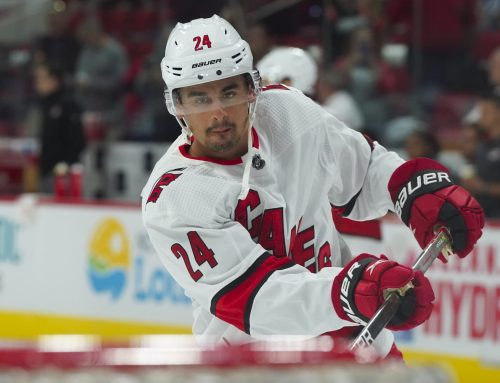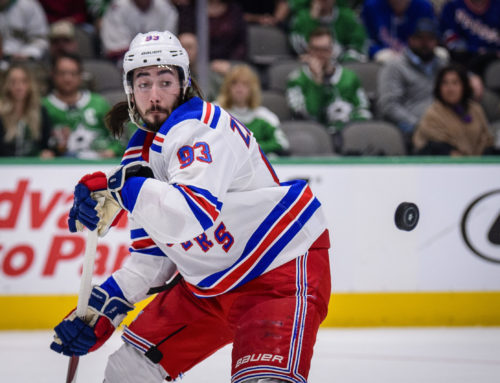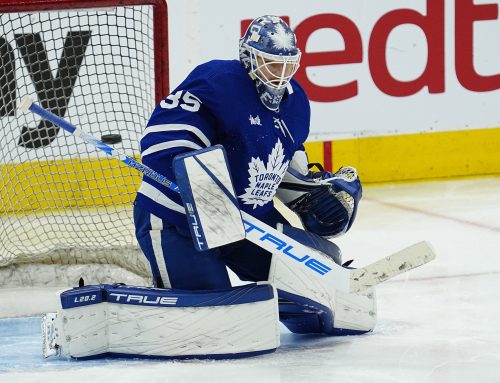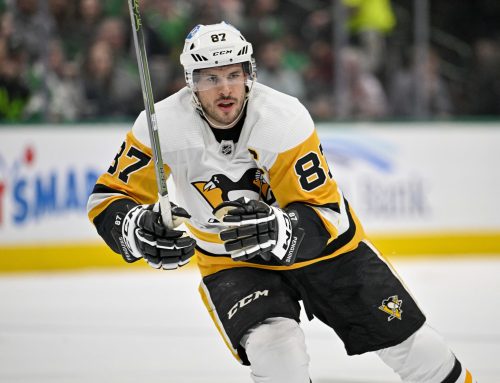Eastern Edge: Players who fell short of expectations
Brennan Des
2020-05-12
In this week's Eastern Edge, we'll discuss a few players that fell short of expectations this season. Many of these players elevated our expectations with great performances last year, so I'll try to uncover what changed between this year and the last. Obviously, there are other players in the league who meet the criteria for this list (i.e. Jeff Skinner, Max Domi, Claude Giroux), so please let me know if you'd be interested in a second installment of this article!
Okay, let's get one thing straight. A 47-point pace from a defenseman is pretty darn impressive. However, while that may be impressive for your average defenseman, it's a step backwards for Rielly, who was coming off a 72-point campaign. The first thing that stands out to me is shooting percentage. When he put up 72 points last year, Rielly scored on nine percent of his shots – about double what we were used to seeing from him. He scored 20 goals in the process, marking the only time in his seven-year career that he's managed a double-digit goal total. This year, his shooting percentage sits at just 2.4 percent – about half of what we might expect from him. Rielly missed a significant portion of the season with a broken foot, so we're working with a smaller sample size when we look at his production this season. As a result, we may observe irregularities that wouldn't be present over 82 games. So perhaps this low shooting percentage is a product of small sample size and Rielly will rediscover a four to five percent efficiency next year. In addition, his shot volume hasn't changed significantly since last year, so I think it's reasonable to project 10 goals for him during the 2020-2021 campaign.
It's also important to mention Rielly's power-play production, as he was on pace for just 12 points with the man advantage this year – after tallying 21 last year. That decline is partially explained by the coaching change in Toronto this season. Through 23 games under Mike Babcock, Rielly was seeing 63-percent of his team's total power-play time. In 24 appearances since Sheldon Keefe took over, Rielly's been seeing just 38-percent of Toronto's minutes with the man advantage. Tyson Barrie has seen the opposite pattern, as his portion of power-play time jumped from 40-percent to 71-percent in that same span. So, what does this mean for Rielly next season? Well, I think he has the talent to put up 60 to 70 points. However, if Barrie re-signs with the Leafs, it looks like Rielly's power-play opportunity will stay limited – ultimately preventing him from achieving the high point totals that we see from other elite fantasy defensemen.
Last season, Atkinson scored at a 71-point pace. This season, he scored at a 48-point-pace. What changed? Well, for starters, Atkinson's line mate Artemi Panarin left the Blue Jackets. It becomes a lot harder to put up points when the most offensively gifted player on your team is no longer present. However, it's not that simple. Atkinson had a couple of strong showings before Panarin even arrived in Columbus, highlighted by a 62-point campaign in 2016-2017. So, if his offensive output isn't entirely reliant on Panarin, then how do we explain the huge drop in production? Well, Atkinson was hindered by an ankle injury that kept him sidelined for multiple stretches this year. He had suffered a similar injury in the past and mentioned that returning to 100-percent wasn't a straightforward process. Your ankle is forced into a lot of awkward angles during a game, that you may not be able to test out in practice. Atkinson's ice-time has been reduced by a minute and a half compared last year, which may be a result of the aforementioned ankle injury. Coach John Tortorella may have wanted to avoid overworking Atkinson and re-aggravating the issue, resulting in less time on ice. Overall, this prolonged break should give Atkinson some extra time to rest and return to form as a 60-point player next year. I think he'll have a strong supporting cast as Pierre-Luc Dubois and Oliver Bjorkstrand continue to improve.
I'm reluctant to say that Larkin struggled this year, because a 61-point pace is nothing to scoff at when you play for a team that won 17 of their 71 games. However, expectations were high for the 23-year-old forward after he put up a 79-point pace last year. So technically, he did fall short of our expectations this season. At first, I thought Larkin's decline in production could be explained by the absence of his line mate Anthony Mantha, who missed significant stretches of the season due to injury. However, Larkin put up 18 points in 20 games without Mantha between December 22nd and February 10th, so that theory went out the window. Then I took a look at Larkin's advanced stats and realized he was getting a point on just 61-percent of goals scored while he was on the ice – that number was way up at 75-percent last year. In contrast, Mantha's IPP rose from 70-percent to 75-percent. So then I started to think that maybe Mantha's emergence was taking away from Larkin's production. But that theory was also thrown in the trash because Larkin was playing very well alongside Mantha in the weeks leading up to the season's pause. Larkin posted 13 points in 14 appearance before the season was put on hold, while Mantha tallied 14 points in those same 14 games. So, if both of my theories tying Larkin's production to Mantha's presence were thrown in the garbage, what exactly is the takeaway here? For starters, I think it's reassuring that Larkin's production isn't necessarily dependent on another player. At the end of the day, I think Larkin just had a slow start to the season, tallying 27 points in his first 43 games, before bouncing back with 26 points in his final 28 contests. I think Larkin's fantasy hockey value may have dropped after this season, but that just means you'll get more of a bargain when you draft him next year.
Upon returning to the NHL in 2017, Dadonov managed a 70-point pace in back-to-back seasons. He took a step backward this year, scoring at a modest 56-point pace. Dadonov started off strong with 34 points in his first 42 appearances but stumbled in the second half, tallying just 13 points through 27 games. Unlike the other players on this list, it's much more difficult to pinpoint the cause of Dadonov's regression. Sure, his ice-time this season was lowered by more than a minute compared to last year. However, like I said, he was still productive during the first half of the campaign, despite the reduced ice-time. So maybe he just struggled during the second half and wasn't able to fully bounce back due to the season's abrupt pause. I personally think it's too early to attribute this drop in production to age-related decline. A lot of players put up strong offensive numbers in their early 30s and Dadonov is in a good situation as long as he's playing alongside Aleksander Barkov and Jonathan Huberdeau. With that being said, Dadonov doesn't yet have a contract for the 2020-2021 season. So, any hopes on a bounce-back showing from him next year may depend on where he ends up signing.





 T.B
T.B FLA
FLA NYI
NYI CAR
CAR TOR
TOR VGK
VGK VAN
VAN EDM
EDM MIN
MIN STL
STL CHI
CHI
